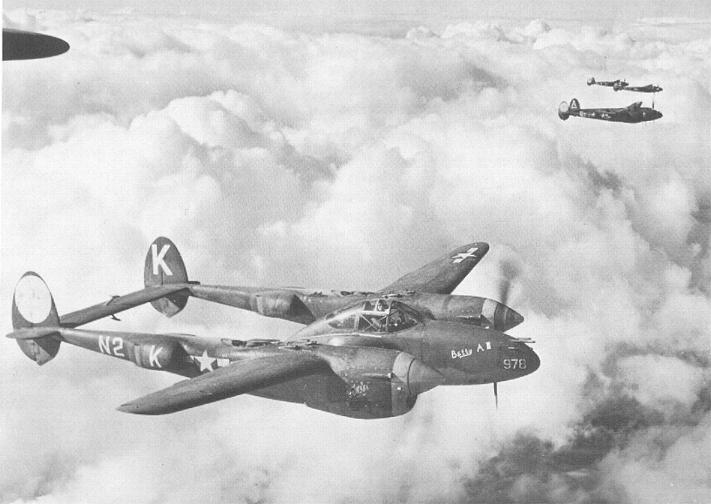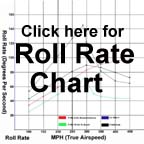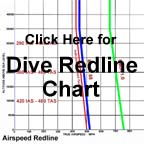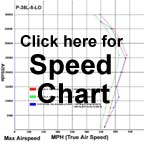
Find the perfect fit with Amazon Prime. Try Before You Buy.

Text and Diagrams © 1992, 1999 Carlo Kopp, © 1999 Corey C. Jordan

The result was an aircraft which could well exceed the Luftwaffe fighters in performance, while further extending the type's radius performance.
Almost 3,000 were built and deployed to every theater, with increasing numbers to the MTO with the 15th AF, the Pacific with the 5th, 7th, 11th and 13th AF's, and Burma/India with the 10th and 14th AF's.
In the Pacific, the 5th and 13th AF's used the P-38J to its fullest. The invasion of the Philippines saw redeployment from New Guinea to the Philippines, and the 475th FG, Satan's Angels, with four squadrons of P-38s led the scoring contest, well ahead of the mixed FG's. The 475th was a late entry, formed at Ipswich in mid 1943 with a mixed force of G/H models. Many aces flew with the Fifth Air Force, and the two highest scoring US pilots of the war, Richard Bong (40) and Tommy McGuire (38), both flew the P-38, Bong with the 49th Fighter Group and McGuire with the 475th. By the end of the war, the 475th had destroyed 551 for 56 losses, a ratio of 10:1. The 49th, having flown mostly P-40s and P-38s, with some P-47Ds thrown in for good measure, out scored the 475th with 668 air to air victories. This score ranked them third of all American Fighter Groups behind the the 354th and 56th in the ETO. A much publicized event in the Pacific was the 1944 visit by Charles Lindbergh, who widely disseminated the knowledge of range performance improvement through optimal cruise control technique (discussed above), getting the message to pilots and unit commanders throughout the theater.(4)
In the Med, the P-38Js flew from Italy on escort and fighter sweep missions into Southern and Central Europe, attacking targets as far North as Vienna and Prague, and repeatedly raiding the Rumanian oilfields at Ploesti. The Ploesti oilfields were the target of many a B-24 raid, with questionable results, P-38 strikes however reduced production to a fraction of full capacity. The P-38s became a familiar sight all over Europe, strafing railway locomotives and Flak sites in areas once the inviolate domain of the Luftwaffe. With ability to carry two 2,000 lb bombs to substantial radii the P-38 became a major battlefield interdiction asset, playing a key role in the 1944 invasion.
The P-38J was followed by the P-38L, deliveries of which commenced in June, 1944, almost 4,000 were built by the end of hostilities. The P-38L was fitted with F-30 engines, delivering equal or better power to higher altitudes, and slightly larger fuel tanks, with booster pumps in the wings. Detail changes included the first tail warning radar in a fighter.
By the end of 1944, the role of the P-38, like that of most Allied fighters, had shifted to tactical ground support largely due to the absence of serious fighter opposition. As the Third Reich crumbled and the Japanese retreated into their final defensive perimeter, the operational career of the P-38 reached its final stage.
Expensive to maintain and fly, most P-38s were phased out soon after the end of hostilities in the Pacific, the F-51 Mustang assuming its role. It is interesting to note that the haste with which the aircraft were disposed of prevented their use in the subsequent Korean war, an environment where the P-38 would doubtless have thrived in its tactical interdiction role, with better payload/radius, firepower and resilience to ground fire than the F-51. The last operational P-38s remained in service with several US aligned Third World countries, but spares availability and operating costs soon led to their demise. Today only a small handful of aircraft remain, with even fewer flyable.




The speed and range of the F-4 guaranteed success and set the trend, with the later P-38G metamorphosising into the F-5A, of which no less than 60 were built. Later photorecce subtypes were created by conversion from fighter airframes rather than new build.
The P-38J was the last subtype to provide for new built photorecce airframes, with 200 built as F- 5B-1 models, followed by 123 F-5C-1 and an undisclosed number of F-5E-2 and F-5F conversions. The subsequent P-38L was only ever modified for this role, with 705 rebuilt to E-3 configuration and many more to other subtypes, including the F-5G with the bulbous nose configuration.
Another important variant of the P-38 was the Droop Snoot. The P-38 could carry up to two 2,000 lb bombs, or at more useful radii, one bomb and a 300 USG tank. This payload/radius capacity begged to be exploited and in mid-1943, USAAF Colonels Hough and Ostrander, capitalizing on the pressure created by heavy losses in the B-17 and B-24 force, proposed the use of the P-38 as a level formation bomber, led by two-seat pathfinding P-38s with bomb sights. By late February, 1944, Lockheed's facility at Langford Lodge in the UK rebuilt several P-38Js to the proposed configuration. This involved removing the armament, installing a transparent perspex nose with an optical flat panel, fitting a Norden gyro stabilised bombsight and adding lead ballast and armor plate about the bombardier's station. At least one aircraft is known to have had a flexibly mounted .50 cal gun in the perspex nose, a field retrofit.
The Droop Snoots proved most successful, with over one hundred aircraft rebuilt, but the concept was in practice limited to tactical operations, largely due to the opposition of the heavy bomber commanders who rejected the idea. Droop Snoots were used extensively in the ETO, MTO and India, and when not providing bomb aiming were used as a navigational lead aircraft. A derivative of the Droop Snoot concept, in turn, the radar equipped P-38J and L Pathfinders were rebuilds from standard J/L-models. These aircraft had a dielectric nose cone covering an AN/APS-15 navigation/attack radar, with the operator hidden in the forward fuselage compartment. No records exist on the number built, these aircraft were employed to lead P-38 level bombing formations under non-visual conditions, eg bombing through an undercast.
The obscure P-38K was a one-off prototype of an optimized high altitude subtype, intended to resolve the problems found in the ETO with the P-38G/H models. Fitted with F-15 engines, chin intercoolers not unlike the later P-38J, and Hamilton Standard Hydromatic propellers optimized for high altitude performance, the P-38K-1-LO would outclimb (4,800 fpm @ SL), outrun (375 kt @ Alt) and out accelerate the P-38J at altitude. The pressure to maintain production rates spelled doom for the P-38K, as the US Government was not (ostensibly) prepared to accept a reduction in volume resulting from the retooling required to accommodate the bigger props. In any event, the P-38J had resolved most of the powerplant related failings of the G/H series and was considered adequate to the task.
Somewhat more successful, but equally obscure was the P-38M, a dedicated night fighter derivative of the P-38L. The P-38M Night Lightnings were a factory design which followed a number of successful field conversions in New Guinea and Guadalcanal, where P-38Fs were fitted with SCR-540 or APS-4 search radar. The P-38L to M rebuilds involved fitting a cramped 'piggyback' radar operator's station aft of the cockpit, under a bubble canopy, and mounting an AN/APS-4 air intercept radar in a cylindrical pod under the nose, the mounting derived from the standard wing pylon. Seventy five P-38L-5-LOs were rebuilt to glossy black P-38M-6-LOs in late 1944, and deployed to the Pacific theater in 1945, too late to score any kills.
The principal structural elements of the P-38 were the wing and the tail booms, the latter housing engines, turbochargers and associated systems. The wing structure was of a cantilever type, comprising a center section assembly, outer sections and wingtips. The wing employed a single main spar at about 35% chord, with an auxiliary rear spar and a forward spar in the center section. Torsion boxes were formed by skinning the wing with panels which were corrugated span-wise on the inner surface, in the center section these panels had an additional internal smooth skin to form true sandwich skins, which enclosed the main fuel tanks. The Fowler flaps were structurally attached to the rear spar. The wing leading edges formed a stiffened structure, which contained 62 USG (5) integral fuel cells.
The 90 USG main tanks were aft of the center section main spar, with the cavity between the main and forward spars filled with the 60 USG reserve tanks. Wet pylons provided for additional 165 or 300/310 USG drop tanks. While each engine had a separate fuel system, tanks could cross feed the engines with the exception of the reserve tanks.
The wing structurally supported the central nacelle and forward boom structure. The forward nacelle carried the nose wheel, guns and magazines, and the cockpit. The pilot was seated fore of the main spar, with a canopy built up from forward and aft sections, with a jettisonable top cover and downward cranked side windows. The windshield was a single slab of armor glass, with a single forward armor steel plate and multiple rear plates to provide comprehensive fore and aft aspect armor coverage. The tail boom turbochargers were contained in an armor ring to shield the pilot from disintegrating turbines. The nose wheel retracted under the cockpit, with an entry ladder hinged at the end of the nacelle.
Avionic fit typically comprised an SCR-522A transceiver, an SCR-274N or BC1206 ranging receiver, an SCR-695A IFF transponder and an APS-13 tail warning radar, fitted to the left aft boom. F-5 photo-recce aircraft often carried a DF receiver with a loop antenna under the forward nose.
Control was via a yoke on an inverted L shaped boom, with radio and gun buttons on the yoke, yoke aileron inputs were augmented by a hydraulic booster system. Engine controls were to the left of the cockpit, with pitch/RPM and throttles clustered, and a separate mixture control group forward of the throttles. The elevator trim wheel was below the throttles. Primary flight instruments occupied the left half of the panel, with engine instruments to the right, using dual indicator dials.
The gun fit comprised a centrally mounted AN-M2C 20 mm cannon with up to 150 rpg, about which were clustered four MG-53-2 .50 cal (12.7 mm) machine guns with up to 500 rpg. Bombs of up to 2,000 lb weight were carried on the centresection pylons, and tree launchers for ten 4.5 in. rockets were optionally fitted to the outboard wing.
The low pressure oxygen system employed an A-12 demand regulator, fed from two F-1 bottles in the left aft boom and a single bottle in the right boom. Pressure drop below 100 psi was typically signalled with a cockpit lamp. The aft boom mounted the coolant radiators and the detachable tail assembly, the forward boom housing the rearward retracting mainwheels under the turbochargers.
The two Allison V-1710F-30 V-12s had a 5.5 in. bore and 6.0 in stroke, providing a compression ratio of 6.5. These drove Curtiss Electric constant speed props via a 2:1 reduction gear, delivering 1,475 HP military and takeoff ratings at 3,000 RPM, or 1,612 HP maximum rating at 3,000 RPM and 60 in. of manifold pressure. Some later engines are described as delivering up to 1,725 HP WEP rating. The engines required 100 octane or higher rated fuel, and had 13 USG oil capacity. The oil was cooled in two outboard chin core radiators, vented via automatically controlled flaps on either side of the nacelle. Fuel consumption was 0.65 lb/HP./hr at 1,100 HP normal rating, at 2,600 RPM.
The B-33 turbochargers drew air from outboard scoops on the booms, feeding central chin core intercoolers with automatic temperature control, which in turn fed the carbs. The B-33 was redlined at 26,400 RPM and exhausted upward, ejector hoods were not used due the device's intolerance of any significant backpressure.

Combat radius helps to win air wars. This simple observation
sums up much of what distinguished the P-38 from its contemporaries, and
also why this aircraft must be considered the single most significant fighter
in the US inventory in W.W.II. The critical air battles, when Allied strength
was still building up and Axis strength was at its peak, were fought by
the P-38 force, deep inside hostile airspace against a numerically superior
enemy.
All other parameters being equal, it was the radius of the Lightning which allowed the ETO daylight bombing offensive to succeed at a time when losses were high and long term success questionable. By the time Mustang numbers built up in the ETO, the Luftwaffe had already crossed the knee in the Lanchesterian attrition war curve and defeat was inevitable. While the much admired P-51 made a critical contribution, it is worth noting that cumulative deployments of the Merlin powered P-51 matched the P-38 only as late as the end of 1944, which is clearly at odds with the established mythology. With the 8th AF, the long range escort load was shared equally by the P-38 and P-51 throughout the decisive first half of 1944.
In the Pacific, where land based air grappled with the Japanese, the Lightning was the foremost fighter, destroying more Japanese aircraft than any other Allied fighter. The air battles over New Guinea, the Solomons, the invasion of the Phillipines and later Okinawa were all campaigns where the radius and performance of the P-38 were fundamental advantages over Japanese air assets.
The perception of the P-38 as a mediocre aircraft is clearly the result of wartime propaganda run unchecked, and lay interpretations of period statements. The historical record clearly indicates that the big twin was there when it really mattered and there can be no greater a compliment for its designers. It was the aircraft which allowed the USAAF to play an offensive strategy almost from the very beginning of combat operations. The P-38 was without doubt the strategically most important American fighter of World War II.
1) Ultimately, combat range of the P-38 grew until it easily exceeded
the endurance of its pilots. Equipped with 310 gallon drop tanks, over
1,030 gallons in total, the P-38 was capable of a combat radius in excess
of 1,300 miles. The P-38 outranged its contemporary versions of the P-51.
2) Mitchel Field was (is) not far from Roosevelt Field where Lindbergh began his epic solo flight to Paris in 1927. Today Mitchel Field is occupied by the Cradle of Aviation museum and Nassau Colliseum, the home of the New York Islanders ice hockey team. Roosevelt field is now an extensive indoor shopping mall.
3) It is now generally accepted that it was Rex Barber who shot down Yamamoto.
4) There has been much written on Charles Lindbergh's contribution to increasing the range of the P-38. Much of this falsely states why he went to the SWPA. Lindbergh's purpose in the SWPA was not originally to instruct P-38 pilots in fuel conservation methods. He arrived in the area as a consultant for United Aircraft. He visited the 5th Air Force Headquarters and managed to convince the brass to allow him to observe P-38 combat operations. He soon discovered that the pilots were not being efficient with fuel. The P-38 manual called for cruise settings of 2,200 - 2,400 rpm in auto-rich. Lindbergh lectured on using 1,600 rpm in auto-lean.
5) Some sources list the leading edge tanks as having a 55 gallon capacity.
It is possible that both capacities may have been installed during the
production run. It is known that some early model P-38J aircraft were retrofitted
with leading edge tanks, not standard on very early build aircraft.
The author and editor would like to thank Capt. Arthur Heiden, USAF (ret) for his insightful and generous commentary on ETO P-38 and P-51 fighter issues through email correspondence with the author and editor in late 1998 and early 1999.
We also want to express our deepest thanks to Captain Stan Richardson Jr. for his ongoing commentary on the P-38 and his experiences flying in combat and as a P-38 Instructor. Without the pilots of the P-38, this story could never be fully told.
This web document is an amended and greatly expanded version of a two part series published in Australian Aviation, in 1992.
[1] 'Pilot's Flight Operating Instructions for P-38H, P-38J-5, F-5B-1', U.S.Army, T.O. NO.01- 75FF-1, April 25, 1944
[2] 'Pilot's Flight Operating Instructions for P-38H Series, P-38J Series, P-38L-1, L-5 and F-5B', AN 01-75-1, January 10, 1945
[3] Bodie W.M. 'The Lockheed P-38 Lightning', Widewing Publications, 1991
[4] Shennan A. 'The Lockheed P-38 Lightning A Pictorial History', Historian Publishers, 1970
[5] McAuley L. 'Battle of the Bismark Sea', St. Martin's Press, 1991.
[6] Middlebrook M. 'The Schweinfurt-Regensburg Mission', Allen Lane, 1983.
[7] Green W. 'War Planes of the Second World War: Fighters, Vol. 4', Macdonald & Co, 1962.
[8] Caidin M., 'Fork-Tailed Devil: The P-38", Bantam, 1990.
[9] Stanaway J. 'P-38 Lightning Aces of the ETO/MTO", Osprey, 1998.
[10] Kinzey B. 'P-51 Mustang in detail & scale, Part 1', Squadron Signal, 1996.
[11] Stafford G.B., Hess W.N. 'Aces of the Eighth', Squadron Signal, 1973.
[12] Glines G.V. 'Attack on Yamamoto:', Schiffer Military History, 1993.
